Allégories des naissances des enfants de Marie-Antoinette
5 participants
LE FORUM DE MARIE-ANTOINETTE :: La famille royale et les contemporains de Marie-Antoinette :: Sa famille française :: Les enfants de Marie-Antoinette
Page 2 sur 2
Page 2 sur 2 •  1, 2
1, 2
 Re: Allégories des naissances des enfants de Marie-Antoinette
Re: Allégories des naissances des enfants de Marie-Antoinette
Les vêtements représentés sur ce tableau sont pour le moins fantaisistes. Il ne s'agit ni de grands habits d'étiquette, ni de robes à la française dans leurs versions traditionnelles, mais plutôt de "batardises" assez médiocres des deux.Le peintre ne devait pas fréquenter Versailles !
_________________
« La mode est à la France ce que les mines du Pérou sont à l'Espagne » Colbert.
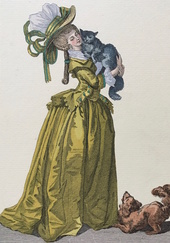
Marie-Jeanne- Messages : 1497
Date d'inscription : 16/09/2018
 La naissance du duc de Normandie - Louis Simon Boizot et Josse-Joseph Le Riche
La naissance du duc de Normandie - Louis Simon Boizot et Josse-Joseph Le Riche
A Sèvres White Biscuit Group of 'La naissance du duc de Normandie'
The Allegory of the birth of the duke of Normandy, the future dauphin of France and Louis XVII
1785, Incised LR for the Sculptor and Modeller Josse-Joseph Le Riche (1741-1812) to reverse of base
Modelled by Louis-Simon Boizot and possibly Jean-Baptiste Etienne Genest,
with a female figure emblematic of French Monarchy, seated on a globe applied with fleur-de-lys, she draped in an ermine-lined cape edged with fleur-de-lys, supporting a lozenge-shaped shield applied with fleur-de-lys, a winged youth emblematic of Fecundity presenting the Royal baby, lying on a shield, applied to the underside with the arms of the Dauphin of France, a shield at his feet, decorated with the arms of Marie Antoinette, within a later glazed gilt-metal-mounted display case and a giltwood and gesso plinth base
11 ½ in. (29 cm.) high
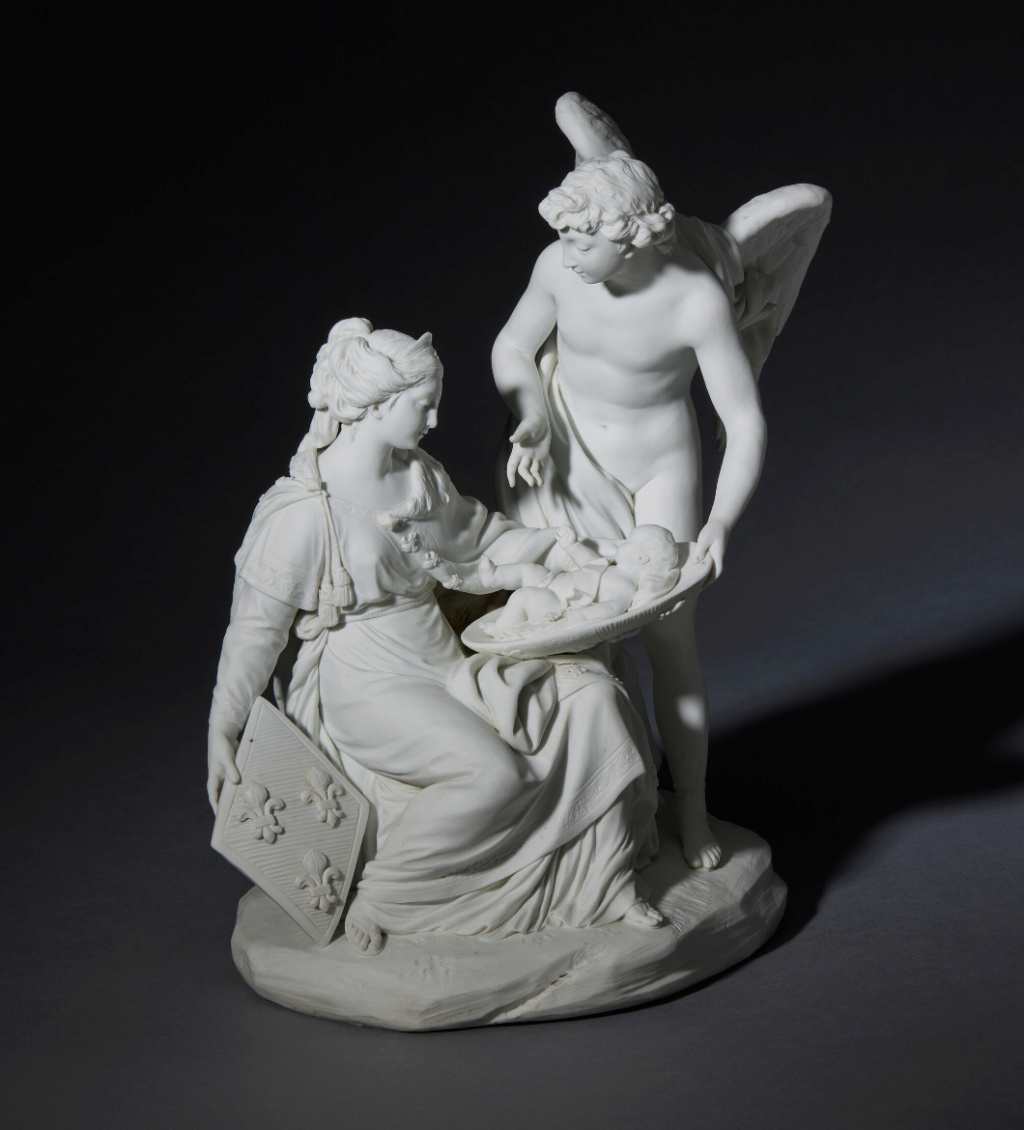
Provenance :
Presented by Charles-Claude Flahaut de la Billarderie, comte d’Angiviller (1730-1809), Arts Administrator and Director General of the Bâtiments du Roi, to either King Louis XVI, Queen Marie Antoinette or the Duchesse de Polignac in April 1785, on the birth of Louis Charles, Duke of Normandy, the future Dauphin of France and Louis XVII.
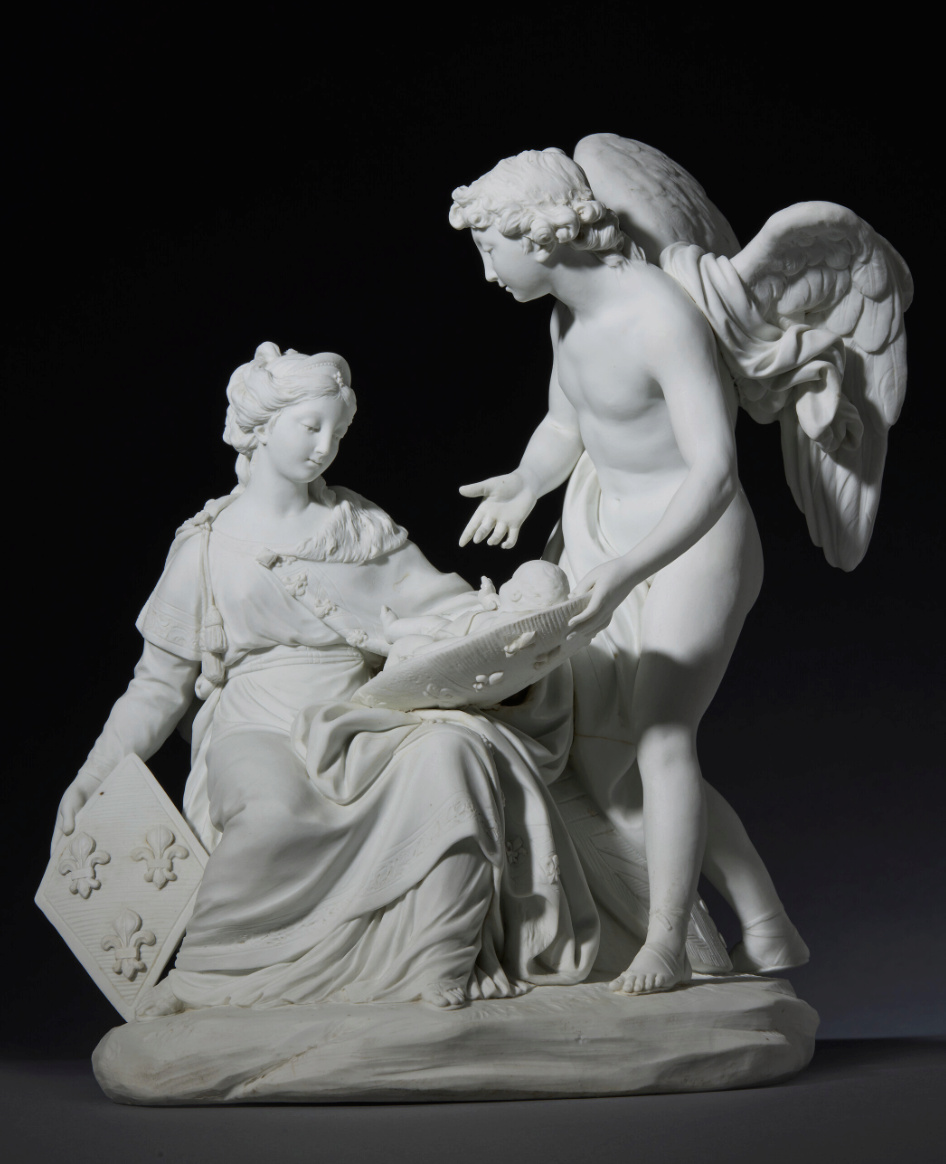
Lot Essay
A SEVRES WHITE BISCUIT GROUP OF ‘LA NAISSANCE DU DUC DE NORMANDIE’
Created in 1785 by the sculptor Louis-Simon Boizot (1743-1809) to commemorate the birth of Louis Charles, the Duke of Normandy, the future Dauphin of France and Louis XVII (1785-1795), this model is the only known surviving example of three that were presented by the comte d’Angiviller, the Arts Administrator and Director General of the Bâtiments du Roi, to King Louis XVI, Queen Marie Antoinette and the Duchesse de Polignac, the Governess of the Children of France. Boizot’s allegory glorifies the French monarchy and conveys the importance of a continuous, unbroken line of succession, following the birth of the King and Queen’s third child and future King of France. Boizot has artfully captured an intimate moment of motherly tenderness and love. The creation of this model, follows the long established tradition at the Sèvres manufactory, known as the Manufacture du Roi, in the production of lavish Royal and diplomatic gifts. The three groups were a special commission, presented to the King, Queen and the Duchesse de Polignac from the comte d’Angiviller.
In anticipation of the birth of a Dauphin, in September 1781 the Sèvres factory set to work creating new designs and shapes incorporating dolphin motifs. The vase ‘Jardin à Dauphins’, was almost certainly presented by Louis XVI to Prince Henry of Prussia and is now in the Louvre Museum (see Inv. no. OA 11854). The shape is recorded in the Registre des Travaux des peintres as early as 3 September 1781.(1) In September 1781, Jean-Jacques Bachelier was commissioned to design allegorical devices to commemorative the birth of the Dauphin at the manufactory. In particular, he supplied designs for a hard paste porcelain gobelet that the comte d’Angiviller wished to present to the Queen prior to her forthcoming birth.(2) A letter dated 30 September 1781 from Jean-Etienne Montucla, the comte d'Angiviller's clerk, to Antoine Régnier, Director of the Manufacture de Sèvres (from 1778 to 1793), acknowledges the significance that such a gift could represent: 'It might be the intentions of m. le comte to portray himself favourably in the eyes of the King and Queen regarding this little matter, especially if we have a Dauphin.'
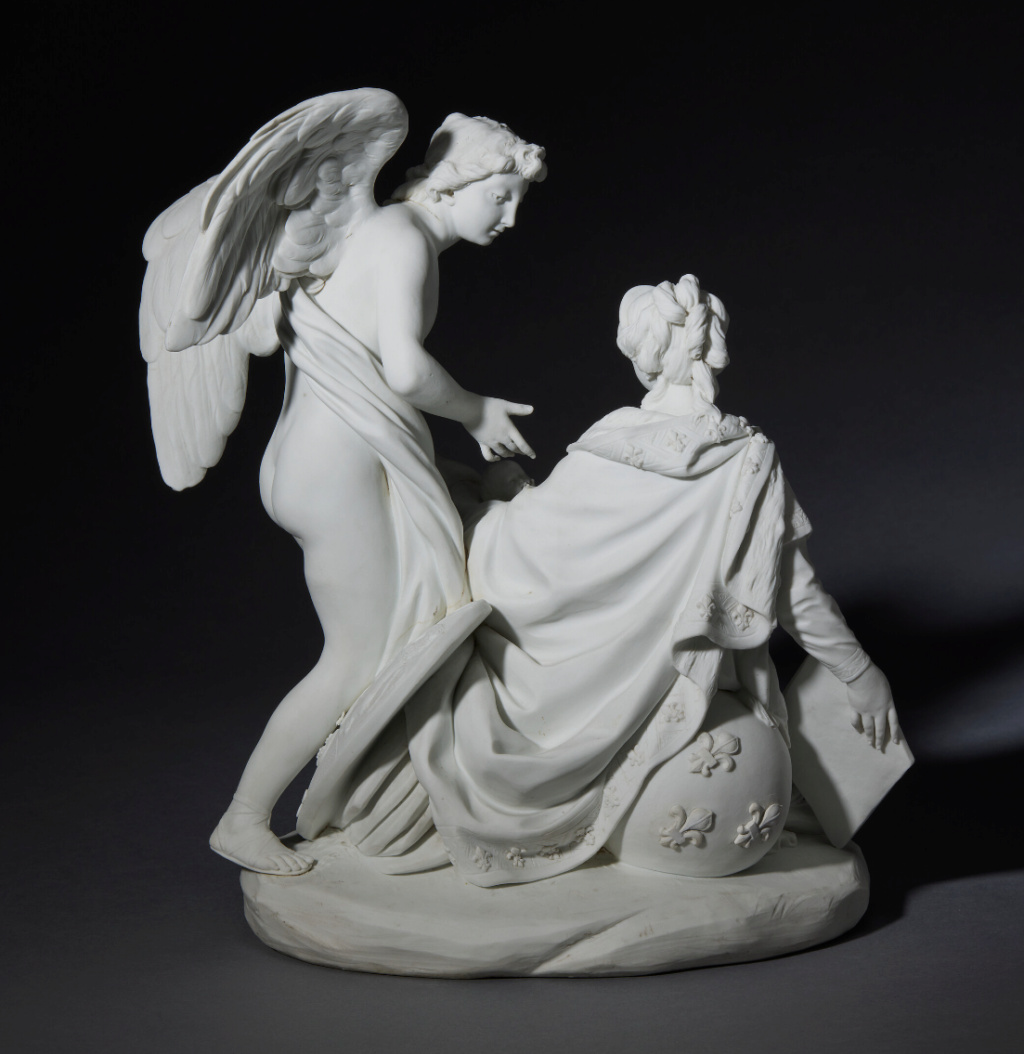
In 1785, as the Royal birth approached, the comte d'Angiviller wanted to secure his place in the Royal couple's good graces by offering them personalised gifts of Sèvres porcelain.
A series of letters convey his plans; on 8th March 1785, Montucla writes to Régnier to inform him of d’Angiviller’s decision regarding the drawings made by Bachelier and Lagrenée, both of whom had just entered employment at the Sevres factory. He notes that the comte d’Angiviller likes Bachelier’s design for ‘Les Parques filant les jours heureux de l'enfant’.4 He suggests that the manufactory could carry out the designs: ‘Thetis plongeant son fils dans les eaux du Styx’ (5) or ‘l’hymen plaçant un second lys dans un cartel pour le cas d’un prince.’ (6) D’Angiviller orders ‘une piece’ of each design. In the letter, the comte approves Lagrenée’s design and Boizot’s idea: ‘Enfin il à approuvé l’idée de M. Boizot.’ The birth was imminent and so he asks that these projects be completed as quickly as possible. The following day, on 9th March, Montucla replies to a letter sent by Régnier, in which he discusses Genest’s idea for the allegorical group in biscuit porcelain. On 27 March 1785, Régnier receives word that the Queen has delivered a Prince and on 29 March, the allegorical group, an écuelle and a gobelet à lait are delivered by the Sèvres manufactory by order of the comte d’Angiviller to Durey, Garçon de la Chambre du Roy, for the King (see Arch. Sèvres, série H).
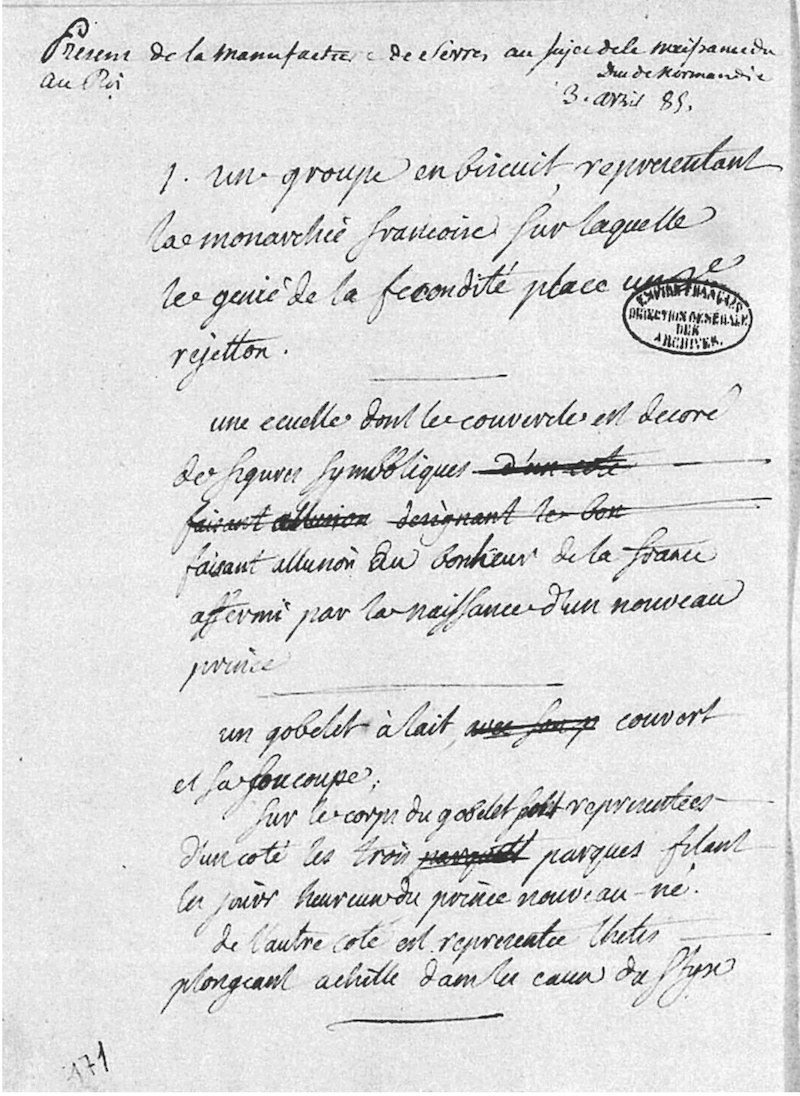
A letter in the Archives nationales, dated 3 April 1785 and titled ‘Présent de la manufacture de Sèvre, au sujet de la naissance du duc de Normandie au Roi’, describes in full the allegorical group gifted to the King on the occasion of the birth of the Duke of Normandy, ‘1. Un groupe en biscuit représentant la monarchie française, sur laquelle le génie de la fécondité place un troisième rejeton,’ see A.N. O.1 2061-2.(7) Included in the delivery was the écuelle and cover, painted with ‘figures symboliques faisant allusion au bonheur de la France affermi par la naissance d’un nouveau prince’ and ‘un gobelet à lait’, cover and stand, painted one side with ‘les Trois parques filant les jours heureux du prince nouveau-né’ and the other with ‘Thétis plongeant Achille dans les eaux du Styx’.
A letter, dated 5 April 1785 from Régnier to the comte d’Angiviller records three groups of ‘La Naissance du Duc de Normandie’, noting that Durey (
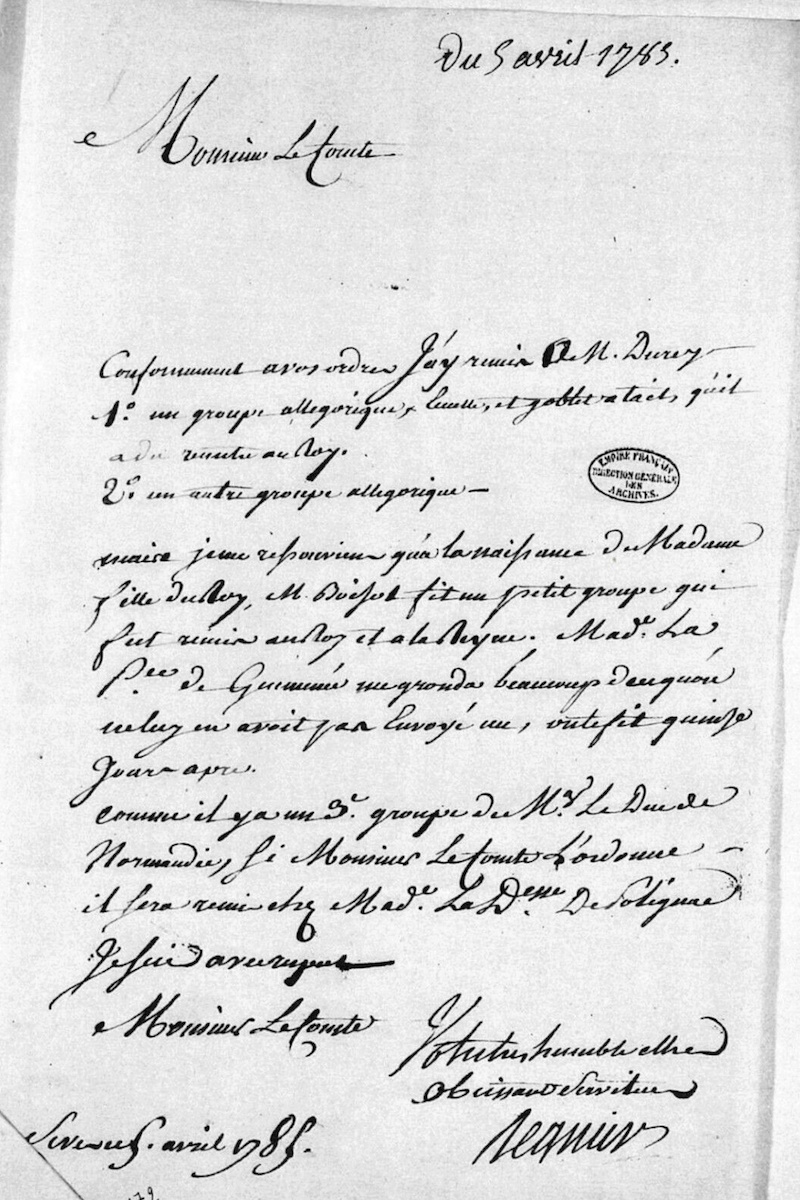
In the letter, Régnier recalls the biscuit porcelain figure that was modelled by Boizot and presented to Louis XVI and Marie Antoinette on the birth of their daughter, Marie-Thérèse Charlotte, known as Madame Royale, in 1778.9 He refers to the fact that Madame de Guéméné, the Governess of the Children of France (1778-1782) at the time of their daughter’s birth, had scolded him for not having sent her one of these groups. Régnier discusses the ‘3e groupe de M.g le Duc de Normandie’ and that 'should Monsieur le Comte wish, it will be delivered to Madame la duchesse de Polignac', see A.N. O.1 2061-2. There is no record of the delivery to the Duchess, but the documented existence of a third allegorical group and the comments made by Régnier to the comte d’Angiviller in his letter of 1785, would strongly suggest that the Duchess was the recipient of the third group.
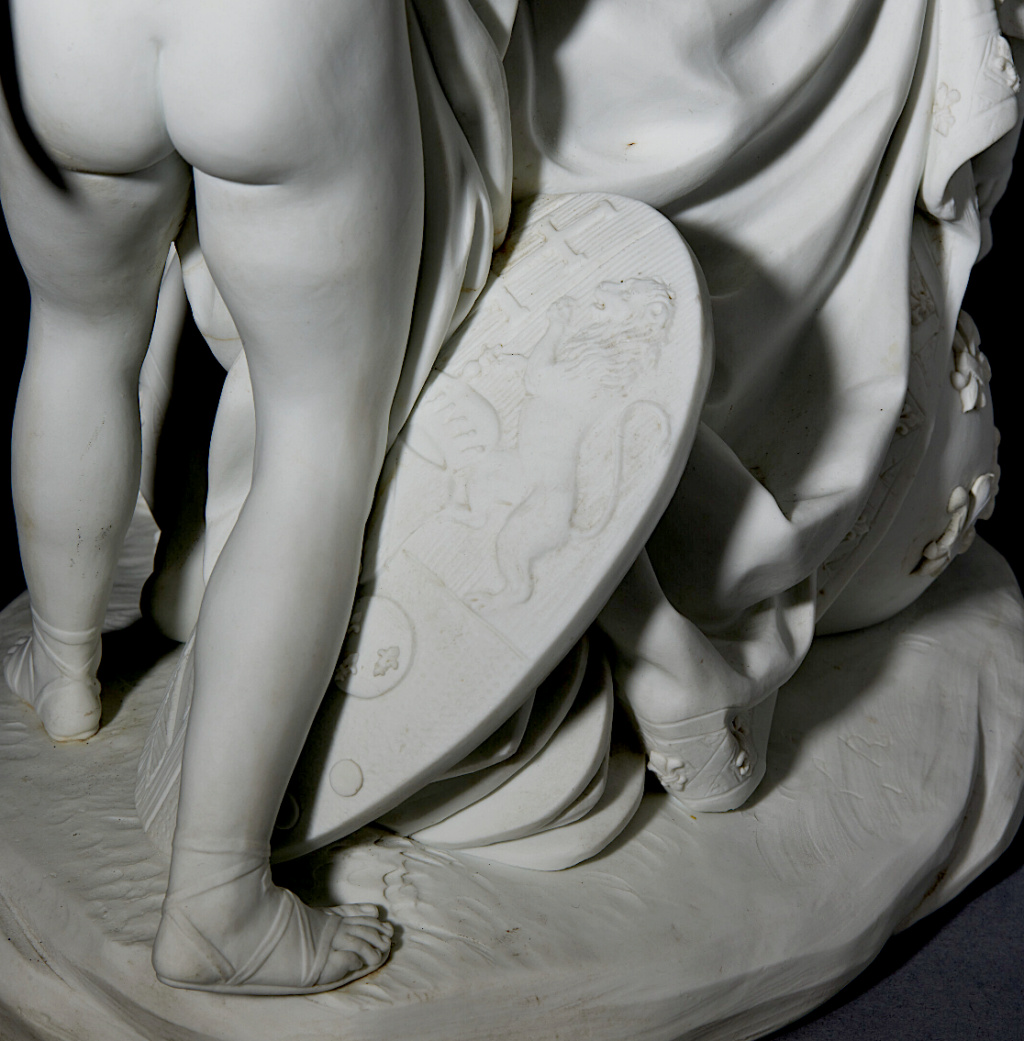
THE DUCHESSE DE POLIGNAC
The Duchesse de Polignac, Yolande Martine Gabrielle de Polastron (1749-1793) is celebrated as one of the great beauties of pre-Revolutionary society, becoming a trusted friend and close confident of Marie Antoinette. As a favourite of the Queen, she was installed in lavish apartments in Versailles and after gaining approval from Louis XVI, she was given the title of the duchesse de Polignac in 1780. This was swiftly followed by her appointment to the prestigious role of Governess to the Children of France in 1782. This appointment proved controversial, the role having traditionally been passed down through generations of aristocratic families, through the female line, as with her predecessor, Madame de Guéméne, daughter of Charles de Rohan, the Prince of Soubise. The Duchess and her supporting sous governates, played an important role in court life, charged with managing the education of the Royal children and navigating strict etiquette and ceremony. The gift of a Sèvres porcelain allegorical group reflected the Duchess’s high position and status within French court, as a key member of the inner Royal circle.
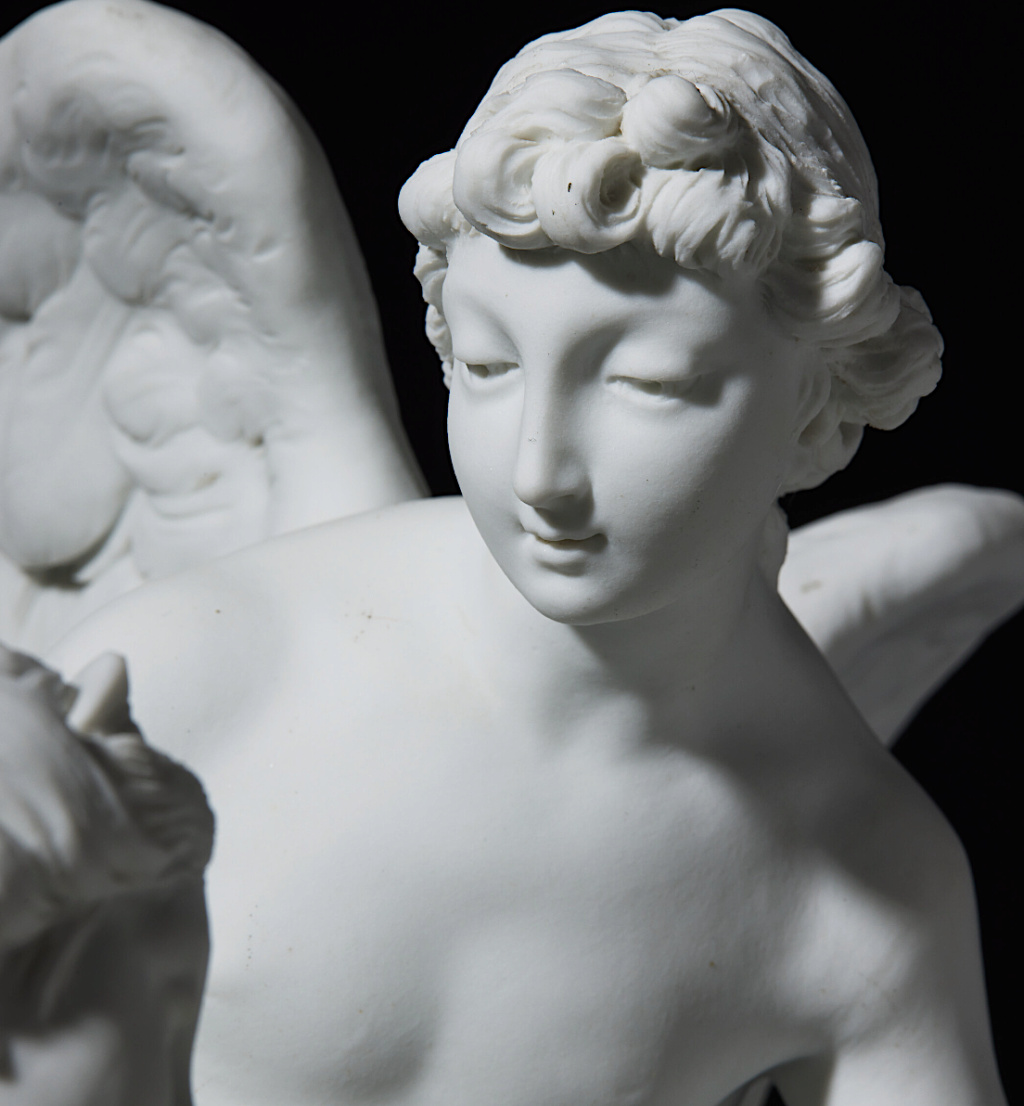
LOUIS XVII
Louis Charles, Duke of Normandy was born at the château de Versailles on 27 March 1785, he was the third child and second son of Louis XVI and Marie Antoinette. Following the death of his older brother, Louis Joseph in 1789 and shortly before the outbreak of the French Revolution, he became Dauphin of France and heir to the French throne. Louis Charles’s tragically short life was predominately spent in imprisonment. The Royal family were forced by a Parisian mob to move from Versailles to the Palais de Tuileries, where they were kept under constant surveillance by the Garde nationale. In 1791 the family made an infamous and unsuccessful attempt to escape their imprisonment on the Flight to Varennes. They were captured and returned to Paris and later imprisoned, and Louis Charles was then separated from his mother. He died of scrofula, associated with tuberculosis, while imprisoned, on 8 June 1795.
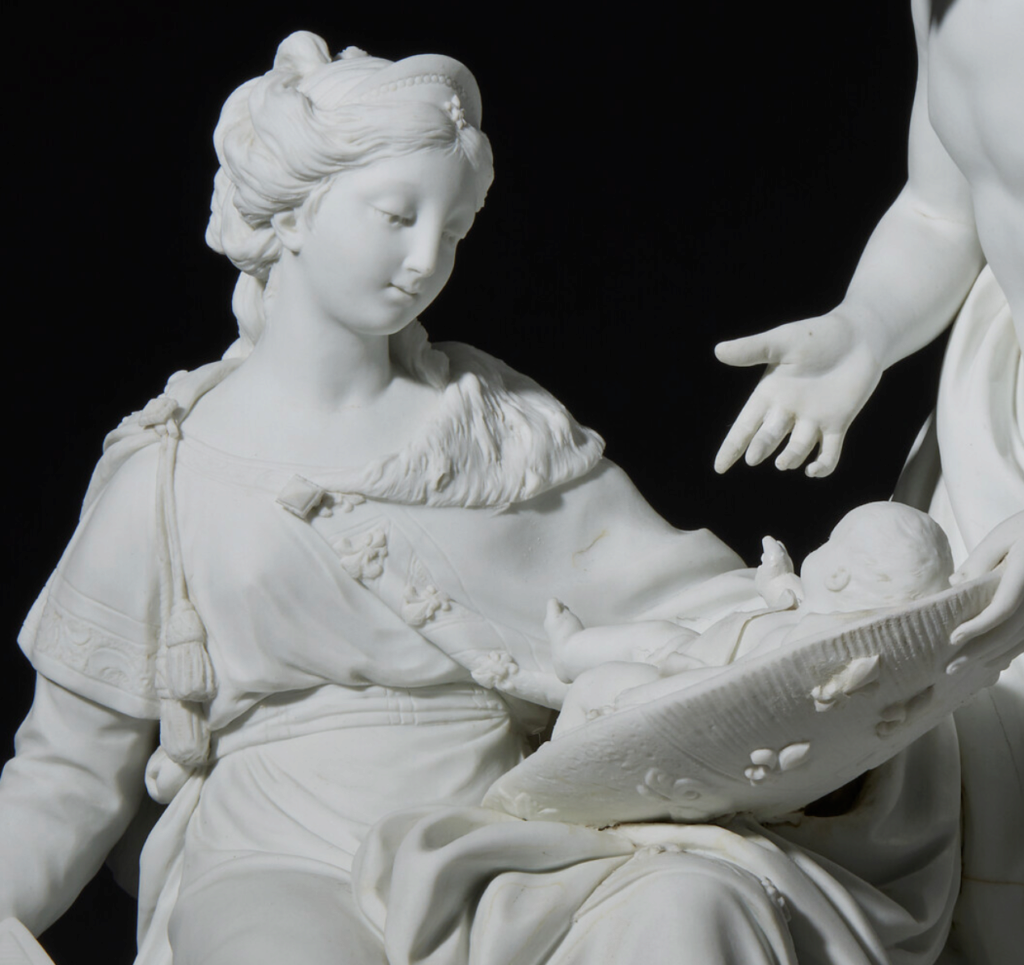
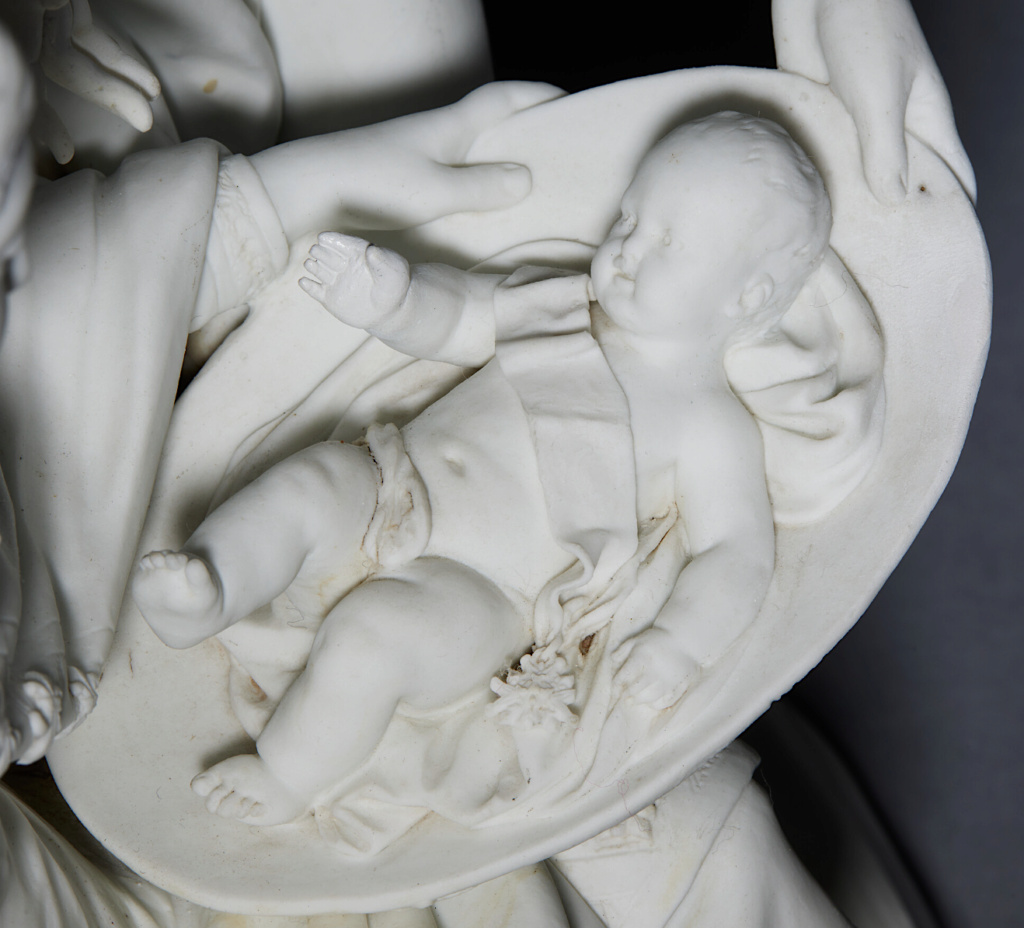

LOUIS-SIMON BOIZOT
As successor to Falconet, Boizot was appointed Director of Sculpture at the Sèvres manufactory from 1773 to 1800. Descended from a family of talented artists and designers, he studied alongside Houdin at the Academie Royale de peintre et de sculpture, in the atelier of the sculptor Michel-Ange Slodtz. Under Slodtz’s direction, Boizot learnt how to master the art of sculpting drapery and fine detail. As a gifted artist with great versatility, he came to the attention of Marie Antoinette, who selected him as her official portrait artist in 1774, becoming Sculpteur du Roi. The Queen commissioned a bust of Louis XVI and one of her brother, the Emperor Joseph II of Austria for the Petit Trianon. In 1785, the same year that Boizot modelled La Naissance du Duc de Normandie, he also produced a bust of Louis XVI and Marie Antoinette, a series of allegorical figure groups, hunting groups and bas-reliefs, illustrating his great versality as a sculptor. In 1774 Boizot modelled L’Autel Royal, an allegorical depiction of the coronation of King Louis XVI and Queen Marie Antoinette and a year later he produced a figure of Marie Antoinette in the guise of Diana.
Boizot’s work illustrates a departure from the mid-18th century rococo tastes of his predecessors, towards a graceful interpretation of neo-classicism. La Naissance du Duc de Normandie perfectly encapsulates his skillful ability to create a model that can be viewed from multiple perspectives, essentially in-the-round. The glorification of the French monarchy through the prolific use of fleur-de-lys, martial shields and Royal arms is evident, however subtle and surprising hidden details emerge on close inspection: the coat-of-arms of the Dauphin, hidden on the underside of the shield on which the Royal baby is presented, the baby’s sash is decorated with the Star of the Holy Spirit and the fleur-de-lys emblazoned on the hem of her dress, are all modelled in great detail. The use of classical drapery, armorial shields and laurel ornament, convey the grandeur of classical antiquity. These classical devices have been softened by Boizot's modelling of the deep folds of the drapery, the curls of hair, the loving gaze of the mother and the gentle expression and gesture of Fecundity.
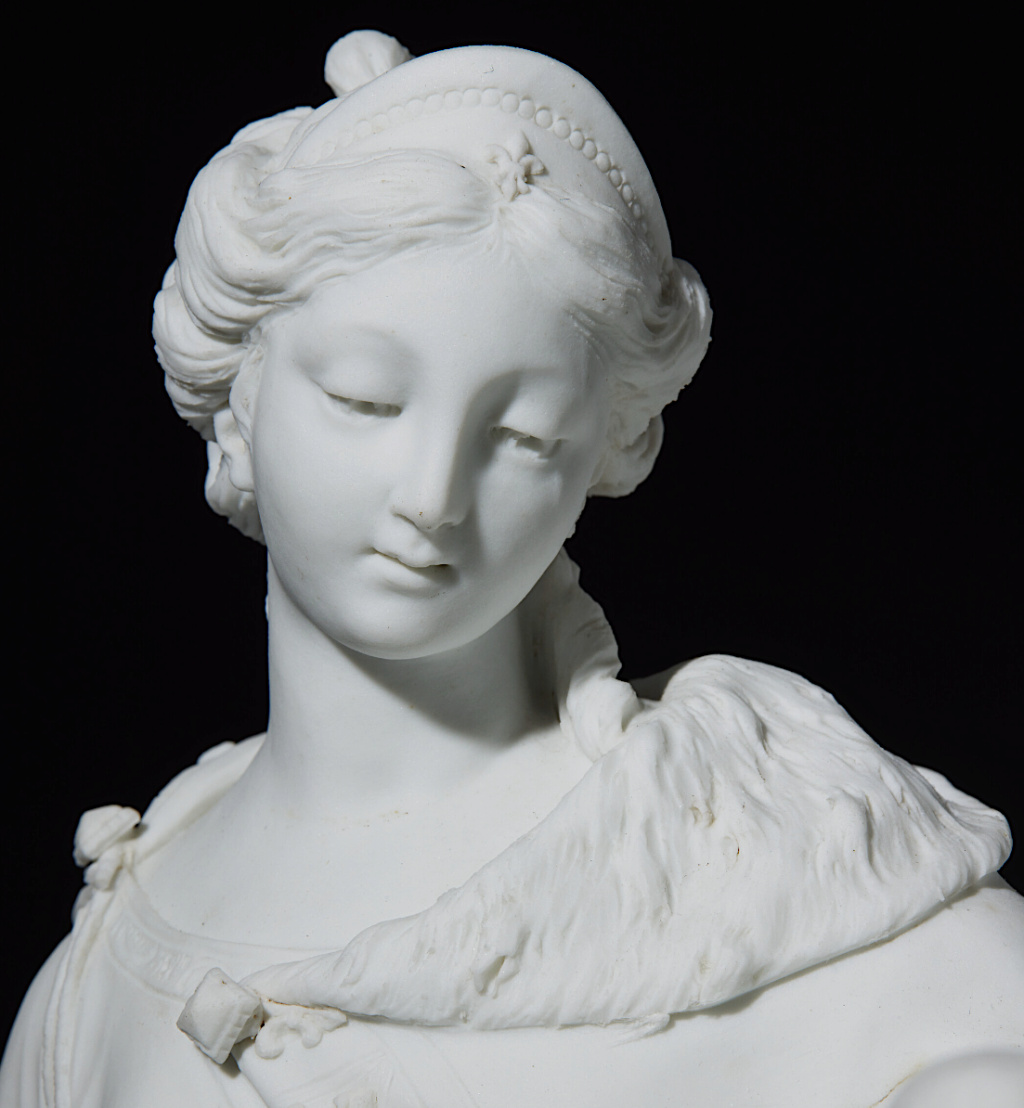
The winged youth, emblematic of Fecundity is notably similar to that of L’Amour, which was sculpted by Boizot in marble in 1772 for Madame du Barry, who placed it in the château de Louveciennes. Two years later, L'Amour and its pendant figure La Nymphe fuyant were made in Sèvres biscuit porcelain for Madame du Barry. The figure of L’Amour reappears in other allegorical groups by Boizot, with small alterations to his pose and expression, see Etienne Pinte, Catherine Gendre, Anne Billon et al., Louis-Simon Boizot, 1743-1809, Sculpteur du roi et directeur de l’atelier de sculpture à la Manufacture de Sèvres, Versailles, 2001, cat. no. 5, pp. 75-76 for L’Amour in marble.

The present group is the only surviving example of the three biscuit porcelain allegorical groups commissioned by the comte d'Angiviller in 1785. The original moulds for this model no longer exist, however, the terracotta and plaster models are retained at the Manufacture nationale at Sèvres (see C259 and C713 respectively). For an illustration of the plaster model of La Naissance du Duc de Normandie see Emile Bourgeois, Le Biscuit de Sèvres au XVIII Siècle, Vol. I, Paris, 1909, no. 199 and also Emile Bourgeois and Géorge Lechevallier-Chevignard, Le Biscuit de Sèvres, Recueil des Modèles de la Manufacture de Sèvres au XVIIIe Siècles, Paris, 1914, cat. no. 11. The plaster model was exhibited at the Bibliothèque de Versailles, M. Pierre de Nolhac, La reine Marie-Antoinette et sa cœur, May – June 1927, p. 194, cat. no. 197.
Notes
1. M.L. de Rochebrune, ‘Sept nouveaux vases de la Manufacture Royale de Sèvres’, L'Estampille, February 2000, no. 344, pp. 36-37.
2. See S. Eriken and G. Bellaigue, Sèvres Porcelain, London, 1987, p. 134.
3. See Tamara Préaud, ‘Jean-Jacques Bachelier à la Manufacture de Vincennes Sèvres’, Jean-Jacques Bachelier Exhibition Catalogue, Musée Lambinet, Versailles, November 1999 - March 2000, p. 62: 'Il peut entrer dans les vües de m. le comte de se faire un mérite dans l'esprit du Roy et de la Reine de ce petit à propos surtout si nous avons un Dauphin' (Archives MNS).
4. ‘The Fates spinning the child's happy days.’
5. ‘Thetis plunging her son into the waters of Styx’.
6. ‘Hymen placing a second lily in a cartouche, in case of (the birth) of a prince’.
7. See also Comte Xavier de Chavagnac and Marquise Gaston de Grollier, Histoire des Manufactures Française de Porcelaine, Paris, 1906, pp. 212 & 254.
8. Almanach de Versailles, 1785, ‘Maison du Roi’, p. 87.
9. After Clodion and modelled by Boizot in 1778, the Sèvres biscuit figure of ‘Madame Royale’ or ‘Enfant aux Coussins’ depicts the Royal baby, seated on cushions.
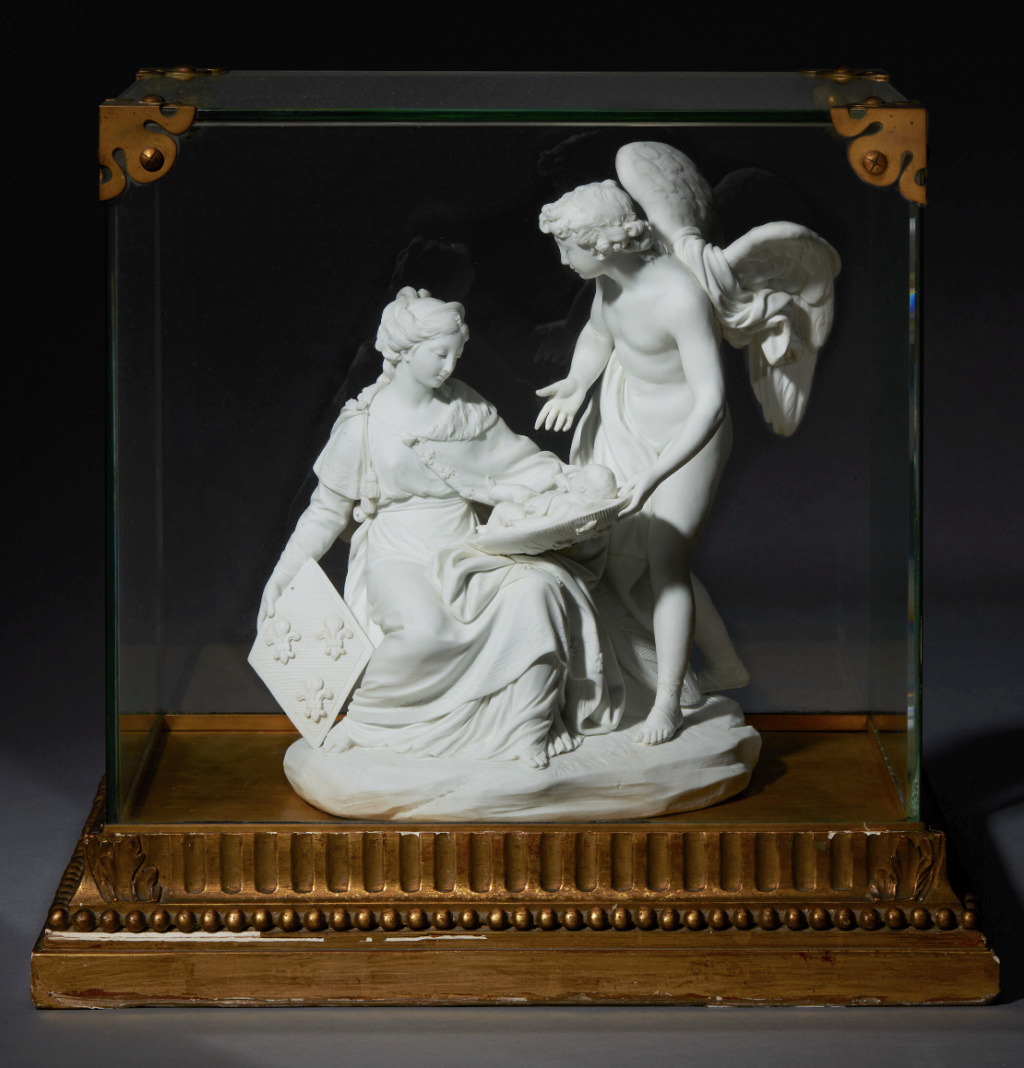
* Source et infos complémentaires : Christie's - Londres, vente du 2 juillet 2024
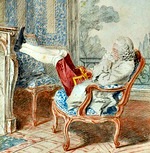
La nuit, la neige- Messages : 18132
Date d'inscription : 21/12/2013
 Re: Allégories des naissances des enfants de Marie-Antoinette
Re: Allégories des naissances des enfants de Marie-Antoinette
_________________
... demain est un autre jour .

Mme de Sabran- Messages : 55497
Date d'inscription : 21/12/2013
Localisation : l'Ouest sauvage
Page 2 sur 2 •  1, 2
1, 2
 Sujets similaires
Sujets similaires» Les enfants " adoptés " par Marie-Antoinette
» Portraits de Marie Antoinette avec ses enfants
» Le physique des enfants de Louis XVI et Marie-Antoinette
» L'éducation des enfants de Louis XVI et Marie-Antoinette
» Causes de la mort des enfants de Marie-Antoinette et Louis XVI
» Portraits de Marie Antoinette avec ses enfants
» Le physique des enfants de Louis XVI et Marie-Antoinette
» L'éducation des enfants de Louis XVI et Marie-Antoinette
» Causes de la mort des enfants de Marie-Antoinette et Louis XVI
LE FORUM DE MARIE-ANTOINETTE :: La famille royale et les contemporains de Marie-Antoinette :: Sa famille française :: Les enfants de Marie-Antoinette
Page 2 sur 2
Permission de ce forum:
Vous ne pouvez pas répondre aux sujets dans ce forum
 si adorable que l'on a envie de papouiller partout ce petit Normandie !
si adorable que l'on a envie de papouiller partout ce petit Normandie ! 